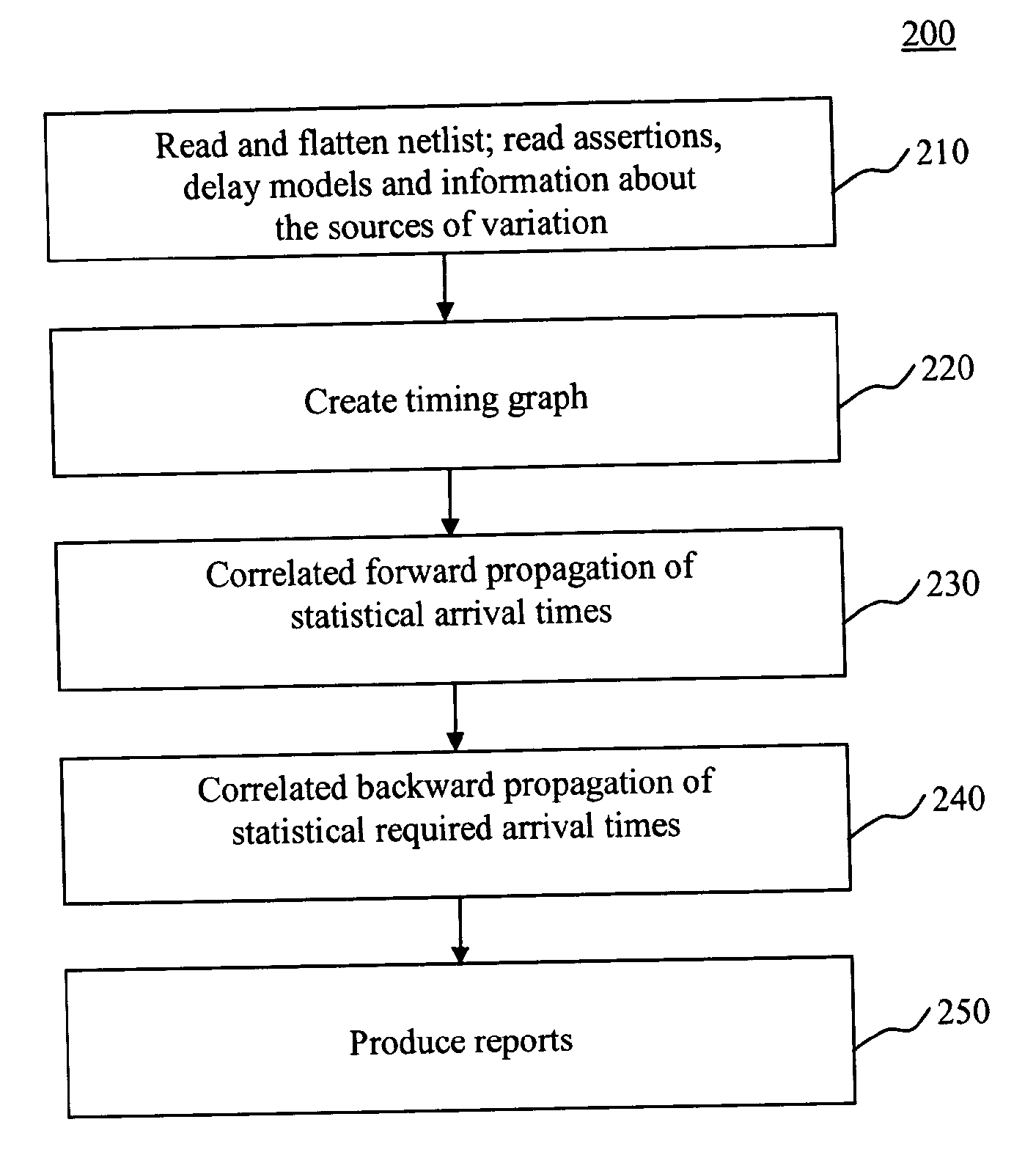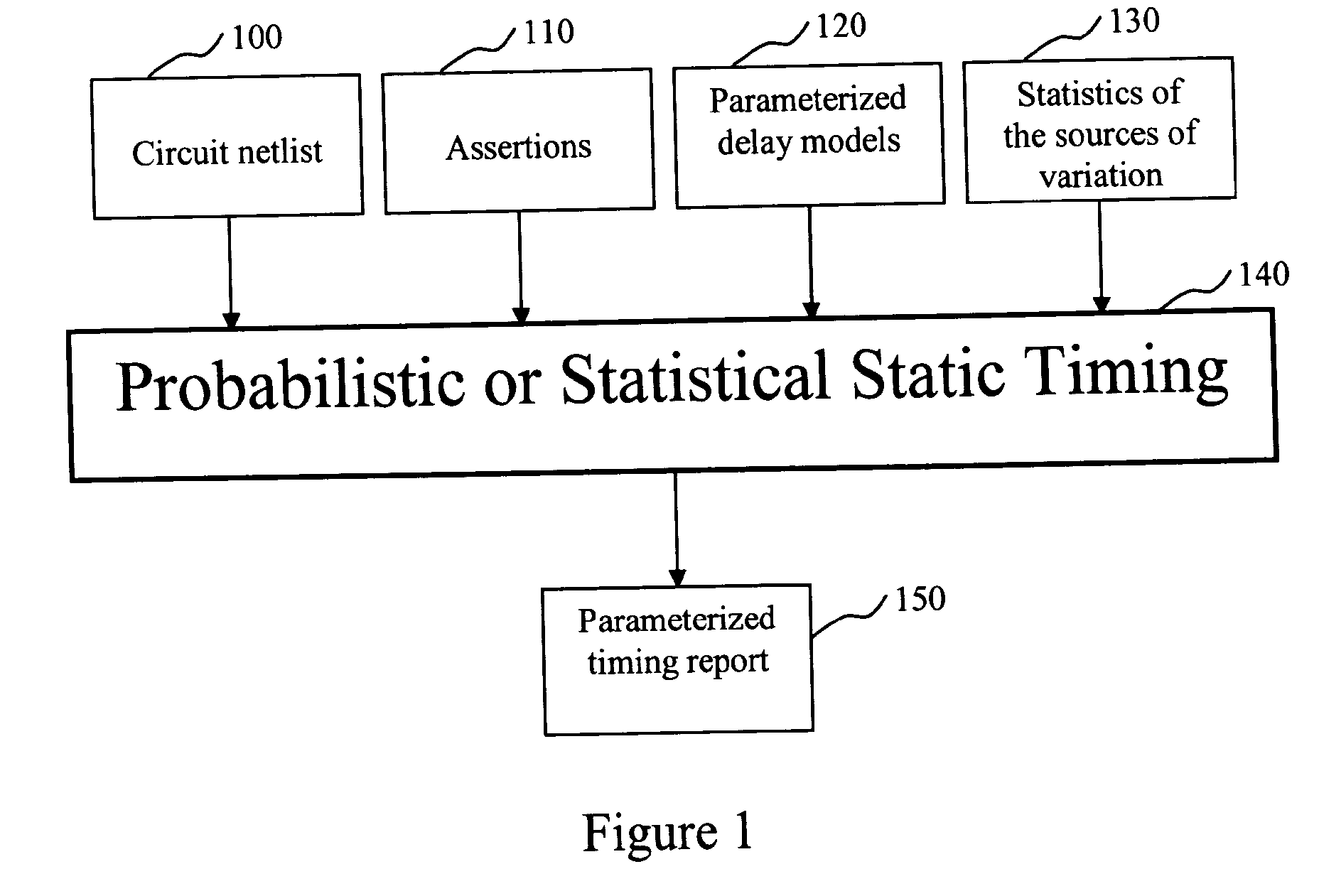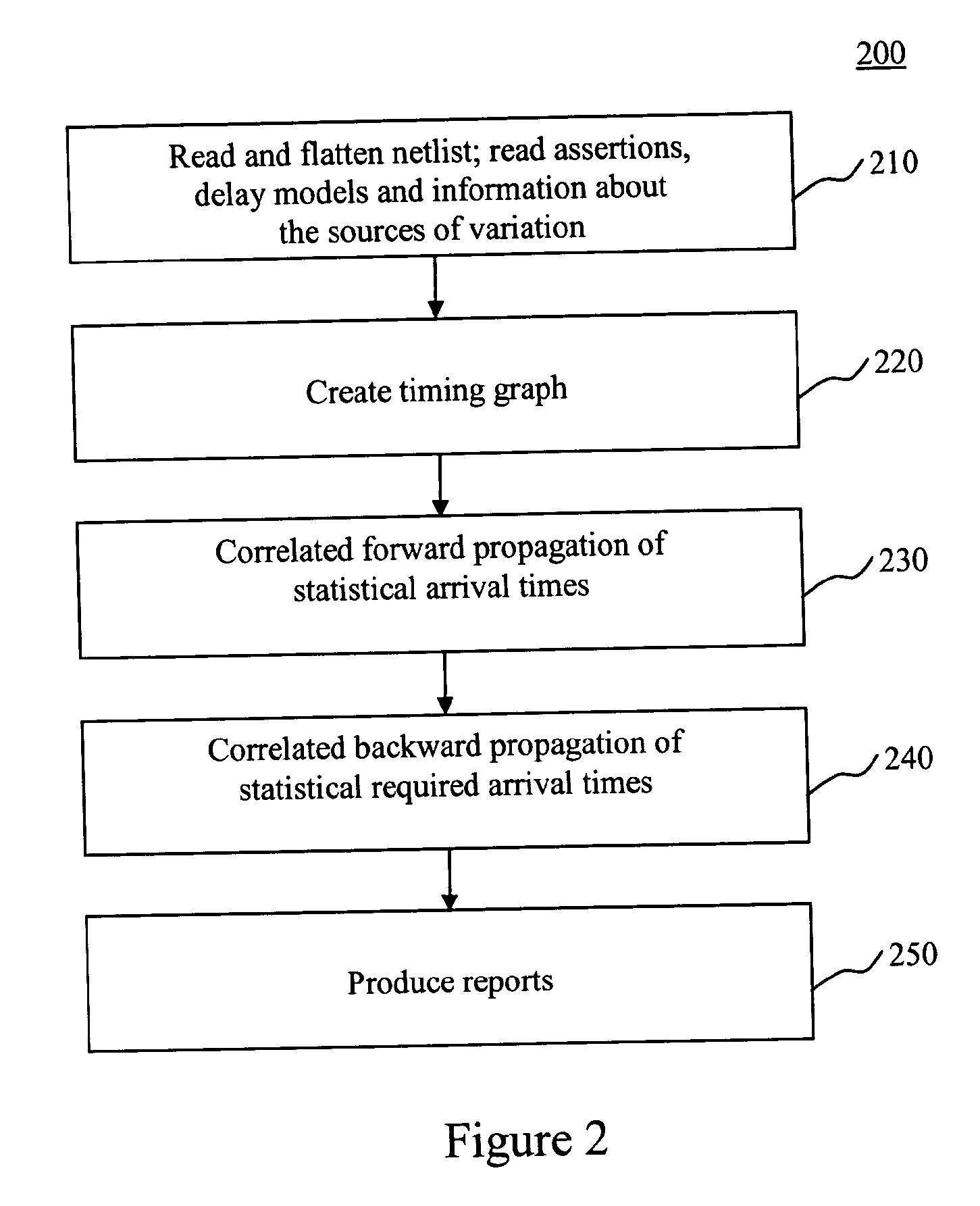System and method for statistical timing analysis of digital circuits
a technology of statistical timing analysis and digital circuit, which is applied in the field of design automation of digital integrated circuits, can solve the problems of linear complexity of timing analysis in the size of the graph and the number of sources
- Summary
- Abstract
- Description
- Claims
- Application Information
AI Technical Summary
Benefits of technology
Problems solved by technology
Method used
Image
Examples
Embodiment Construction
[0034]An inventive statistical or probabilistic static timing flow is shown in FIG. 1. The first input is the netlist representing the structure of the circuit to be analyzed, shown in box 100. The second input is a set of timing assertions, box 1110. These typically include arrival times at the primary inputs, required arrival times at the primary outputs, information about the phases of the clock, and details of external loads that are driven by the primary outputs. The assertions can be in the form of deterministic numbers or independent probability distributions or correlated probability distributions. The third input is a set of parameterized delay models, box 120. These allow the timer to determine the delay of a gate or wire as a function not only of traditional delay-model variables (like input slew or rise / fall time, and output load) but also as a function of the sources of variation. For example, a first-order linear model may be employed, like the one shown below:
delay=a0...
PUM
 Login to View More
Login to View More Abstract
Description
Claims
Application Information
 Login to View More
Login to View More - R&D
- Intellectual Property
- Life Sciences
- Materials
- Tech Scout
- Unparalleled Data Quality
- Higher Quality Content
- 60% Fewer Hallucinations
Browse by: Latest US Patents, China's latest patents, Technical Efficacy Thesaurus, Application Domain, Technology Topic, Popular Technical Reports.
© 2025 PatSnap. All rights reserved.Legal|Privacy policy|Modern Slavery Act Transparency Statement|Sitemap|About US| Contact US: help@patsnap.com



